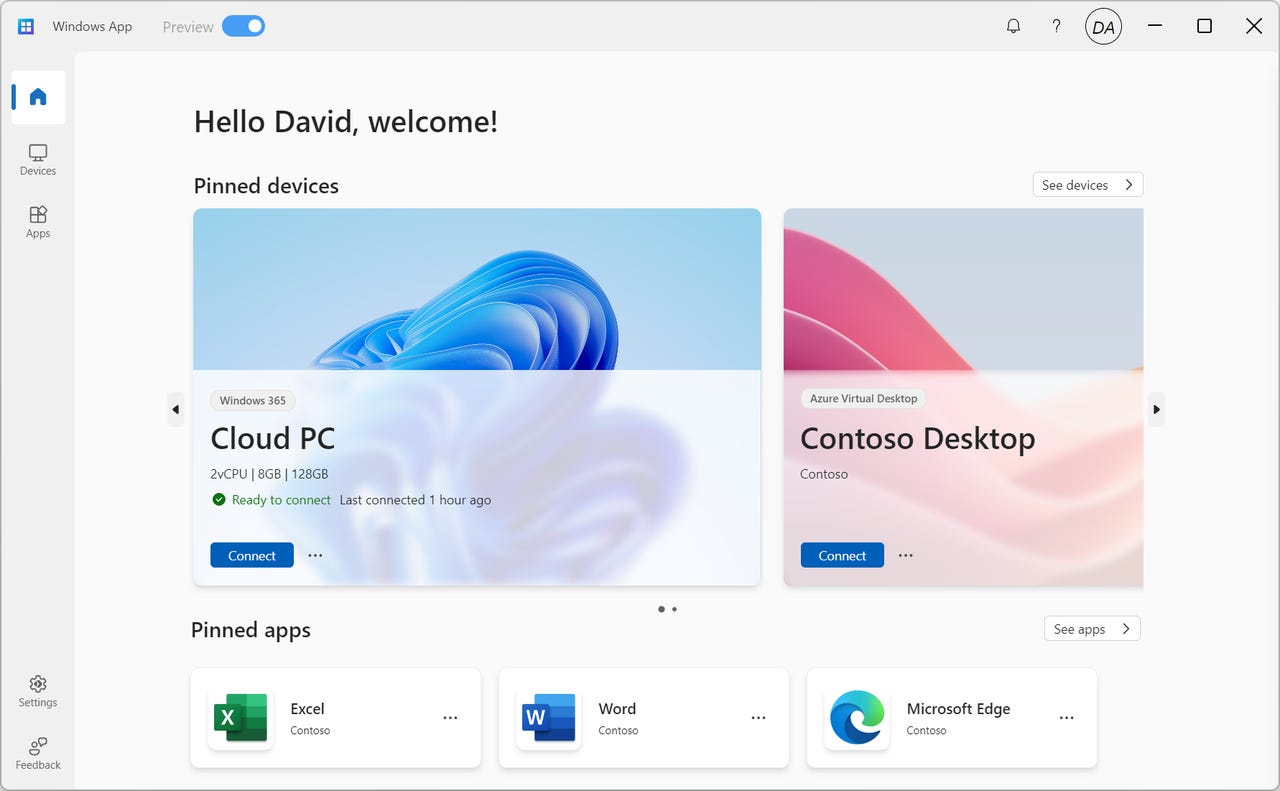
The Chromebook laptop has become increasingly popular in recent years, especially in the world of education. While these computers handle most day-to-day tasks just fine, one of the biggest downsides is that they run on ChromeOS instead of Windows. For many users, losing access to Windows features is a dealbreaker.
That could change soon though, at least partially.
Also: The best Chromebook laptops: HP, Lenovo and more compared
In a blog post, Microsoft dropped the details on Windows App, a service that allows users to access Windows devices and apps on a number of different platforms, including desktops, laptops, phones, tablets, and desktop web browsers — including Chromebooks and Macs. Essentially, the new app lets you stream a copy of Windows running on one PC to another device.
Windows App will have a customizable home screen with access to multiple services and PCs from one screen, plus multiple monitor support, custom display resolutions, dynamic display resolutions and scaling, Microsoft Teams optimization, and support for webcams, audio, storage devices, and printers.
To access Windows App, you’ll need the latest version of Windows 365 — which is turning into the new app. When you open 365, you’ll be notified of the change and see an option to take a tour of Windows App features. After the tour, you’ll be able to click on “Home” and then see any remote devices or apps that you have access to. Filters are available to help you find the right device.
Also: I tested Google’s new Chromebook Plus and the generative AI features blew me away
Unfortunately, the new app isn’t available to everyone. Right now, it’s limited to users who have a business or school account, meaning it’s not accessible to the majority of the population. A note on the official service page indicates that “Windows App is currently in PREVIEW” and adds that the final product may be “substantially modified” before it’s released. The signing screen does indicate that you can use a personal account to log in, but that functionality isn’t enabled yet.
Since the app is being released to a small portion of users at first, a full rollout likely isn’t far away. When that does happen, it brings up the question — is this the first step in getting Windows fully on the cloud?




















